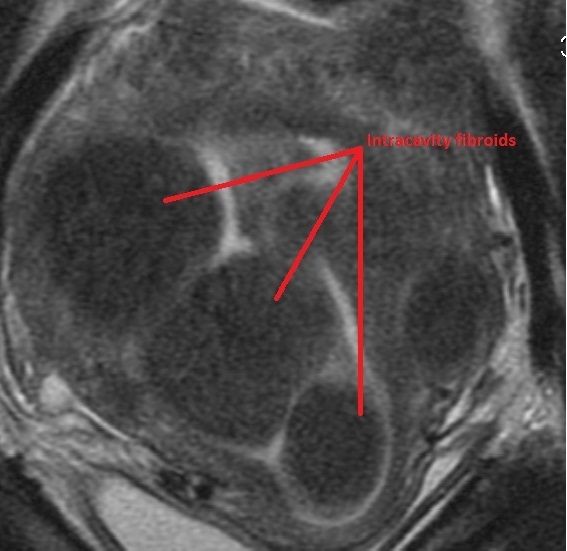The Utility of Magnetic Resonance Imaging (MRI) and How It Is Used to Diagnose Uterine Fibroids
William Parker, MD discusses the use of MRI in diagnosing and managing uterine fibroids. Dr. Parker's upcoming Clinical Opinion article, “The utility of MRI for the surgical treatment of women with uterine fibroid tumors”, will be published in the American Journal of Obstetrics and Gynecology in 2012.

Hope Waltman: It is nice to talk to you today, Dr. Parker. At the 40th AAGL Global Congress, which was held in Hollywood, Florida, you talked about your article for the American Journal of Obstetrics and Gynecology on the use of MRI for managing women with fibroids. What are the current uterine fibroid treatments?
William Parker, MD: Current treatment options for women with fibroid tumors now include “watchful waiting” and medical therapy in the forms of oral contraceptive pills, levonorgestrel intrauterine system, and gonadotropin-releasing hormone agonists. Uterine fibroid embolization and magnetic resonance-guided ultrasound treatment are available minimally/noninvasive forms of treatment. Surgical procedures now include hysteroscopic myomectomy, laparoscopic/robotic myomectomy, abdominal myomectomy, and laparoscopic, vaginal, and abdominal hysterectomy. Even though many treatment options are now available, most women are offered hysterectomy as a first and sometimes only treatment option.
Hope Waltman: What is the first step that patients go through to find out if they have uterine fibroids?
William Parker, MD: The diagnosis of fibroid tumors can be made reliably by pelvic examination and ultrasound scanning. Sonographic evaluation is not necessary when the diagnosis is certain and no treatment is planned.
Hope Waltman: Do most physicians do additional tests to confirm the findings of the pelvic examination? If yes, what is the timeframe (first exam, six months, one year, etc.)?
William Parker, MD: I think most gynecologists who suspect fibroids on pelvic examination will perform a transvaginal pelvic ultrasound in their office to confirm the diagnosis. Once the diagnosis is established, repeat ultrasounds are not necessary unless there are changes in the patient’s symptoms or examination. I usually examine women with fibroids every 4-6 months just to keep tabs on the symptoms and exam.
Hope Waltman: Should physicians explain to the patient all the uterine fibroid options from watchful waiting through hysterectomy and mention MRI?
William Parker, MD: Magnetic resonance imaging (MRI) can be helpful in the determination of which treatment options may be appropriate and allow for referral for less invasive options if in the patient’s best interest.
Hope Waltman: Do you find Magnetic Resonance Imaging (MRI) a better diagnostic tool than Transvaginal Sonography (TVS)?
William Parker, MD: An excellent study comparing TVS, saline-infusion sonography (SIS), hysteroscopy, and MRI found that MRI has superior sensitivity in detecting fibroid tumors. All 4 imaging modalities were performed independently (examiners were blinded) for 106 women who were scheduled for hysterectomy, and the findings were compared with the pathologic examination of the uterus. Submucous fibroid tumors were best identified with MRI (100% sensitivity; 91% specificity). Identification was about equal with TVS (sensitivity, 83%; specificity, 90%), SIS (sensitivity, 90%; specificity, 89%), and hysteroscopy (sensitivity,82%;specificity,87%). In another study, the sensitivity of MRI was 2-fold greater than TVS for the detection of uterine fibroid tumors (MRI, 80%; ultrasound scan, 40%) when compared with hysterectomy specimens. Even after the exclusion of small fibroid tumors (diameter, 1 cm), the sensitivity of TVS remained poor (47%). MRI has excellent reproducibility, whereas TVS demonstrated lower reproducibility, and substantial disparities were found when results were obtained by different observers using TVS. The authors considered MRI as the preferred imaging modality if invasive interventions such as surgical treatment, uterine artery embolization, or focused ultrasound treatment were contemplated. A search of the PubMed citation database failed to find any studies that compared 3-dimensional sonography with MRI.

Magnetic Resonance Imaging (MRI) photo of Intracavitary fibroids
Hope Waltman: Thank you Dr. Parker for explaining the utility of MRI. I look forward to reading your Clinical Opinion article “The utility of MRI for the surgical treatment of women with uterine fibroid tumors”, which is scheduled for publication in early 2012.
Recap on reproductive rights with David Hackney, MD, MS
December 20th 2022In this episode of Pap Talk, we spoke with David Hackney, MD, MS, maternal-fetal medicine physician at Case Western Reserve University and chair of ACOG's Ohio chapter for a full recap of where restrictions on reproductive rights have been and where they're going.
Listen
In this episode of Pap Talk, Gloria Bachmann, MD, MSc, breaks down what it means to be a health care provider for incarcerated individuals, and explores the specific challenges women and their providers face during and after incarceration. Joined by sexual health expert Michael Krychman, MD, Bachmann also discusses trauma-informed care and how providers can get informed.
Listen
